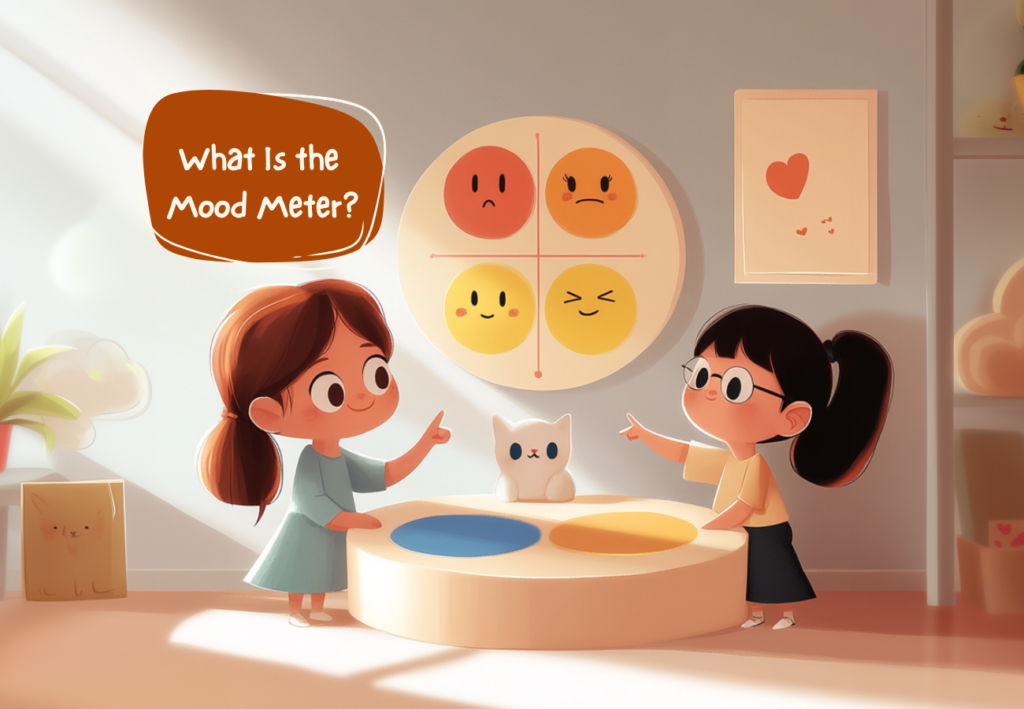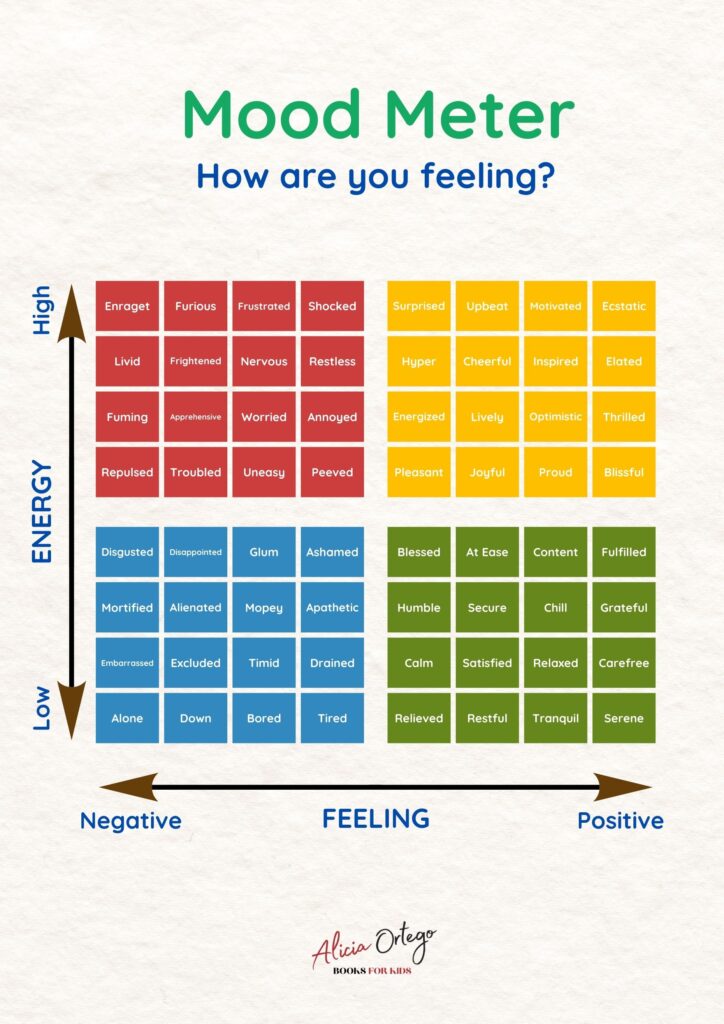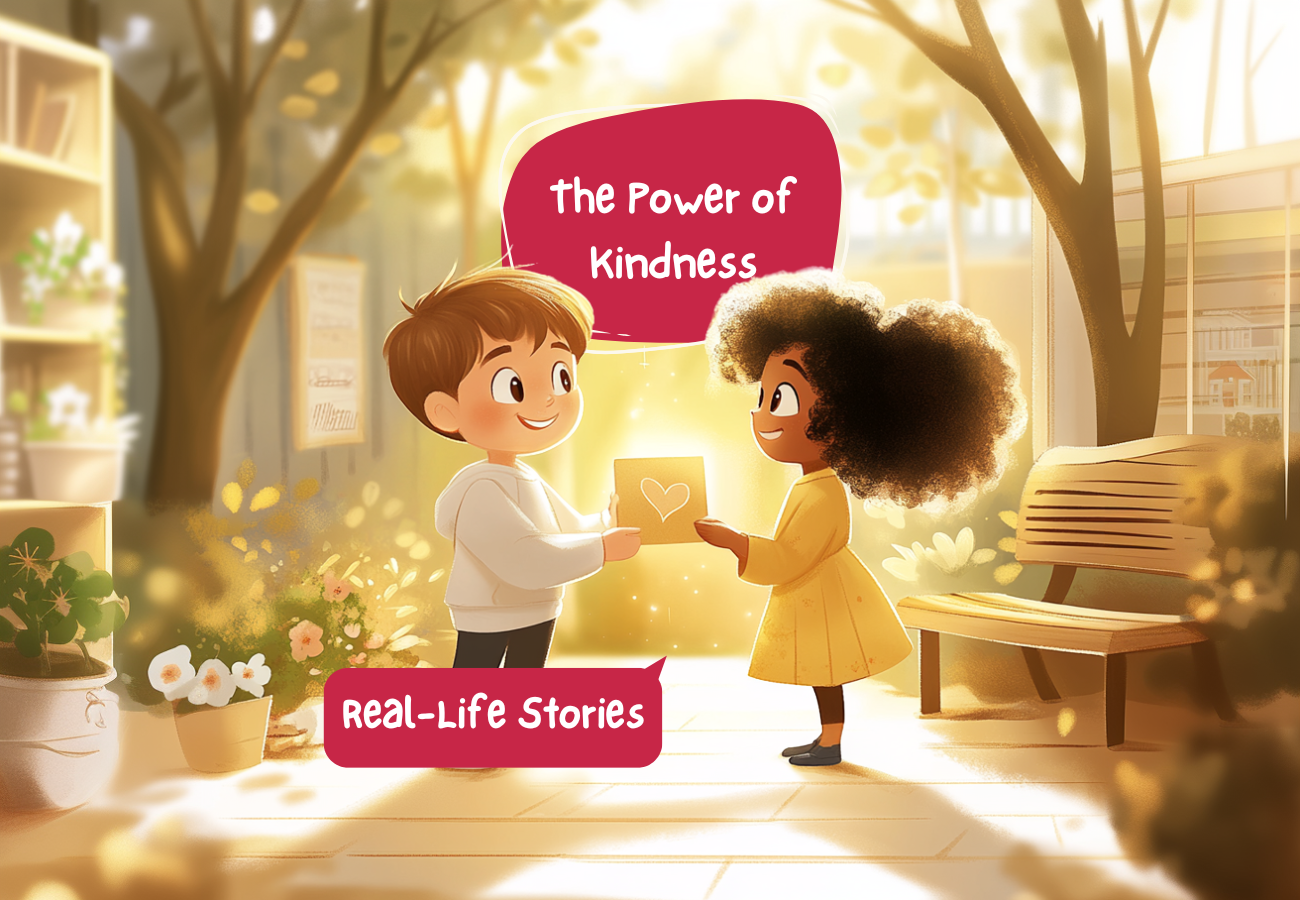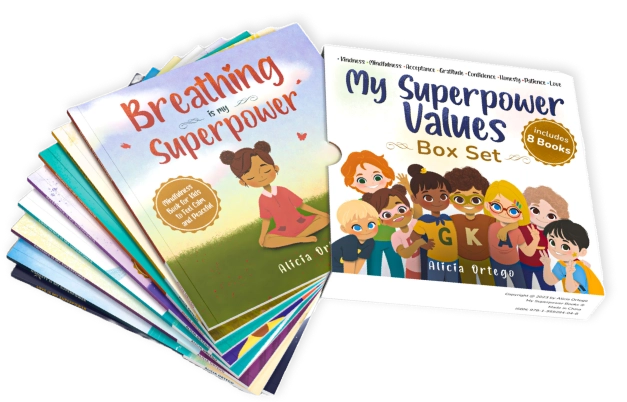What Is the Mood Meter and How Can It Help Kids?

Emotions play a huge role in our daily lives, and understanding them is a superpower every child deserves. One amazing tool to teach emotional awareness is the Mood Meter—a simple yet powerful way to identify and manage feelings. If you’re a parent, teacher, or caregiver, the Mood Meter can help your kids become more emotionally intelligent and confident in expressing themselves.
What Is the Mood Meter?
The Mood Meter is a visual chart that helps people identify and understand their emotions. Created by the Yale Center for Emotional Intelligence, the Mood Meter divides emotions into four quadrants based on energy (high or low) and pleasantness (positive or negative). These quadrants are often color-coded:
- Red: High energy, unpleasant emotions (e.g., anger, frustration).
- Blue: Low energy, unpleasant emotions (e.g., sadness, tiredness).
- Green: Low energy, pleasant emotions (e.g., calmness, contentment).
- Yellow: High energy, pleasant emotions (e.g., joy, excitement).
By helping kids label their emotions using the Mood Meter, we give them tools to navigate their feelings and communicate better.
Why Use the Mood Meter for Kids?
Children often feel overwhelmed by their emotions, especially when they don’t have the words to describe them. A Mood Meter for kids transforms this challenge into an opportunity for growth.
- Builds Emotional Vocabulary:
Instead of saying “I feel bad,” kids can pinpoint emotions like “frustrated” or “lonely,” making it easier to manage feelings. - Fosters Empathy:
By recognizing their own emotions, children become more empathetic toward others. - Improves Self-Regulation:
Once kids know what they’re feeling, they can take steps to adjust their mood—whether that’s through deep breathing, talking to someone, or taking a break. - Supports Mental Health:
Regularly identifying emotions can reduce anxiety and promote a sense of control over their emotional world.
How to Use the Mood Meter at Home or in the Classroom
- Introduce the Mood Meter Chart:
Display a colorful chart in a common space. You can use printable versions like

- Make It a Daily Habit:
Start the day by asking kids where they are on the Mood Meter chart. It could become part of a morning routine at school or home. - Discuss Emotions Openly:
If a child is in the red or blue zone, encourage them to talk about what made them feel that way. Suggest coping strategies or ways to change their mood if needed. - Incorporate Creativity:
Kids love visuals! Create a Mood Meter meme with their favorite characters, or let them draw their own emotion quadrants. - Use Apps for Support:
Digital tools like the Mood Meter app make it even easier to track emotions on the go.
Bringing the Mood Meter to Life
Imagine using the Mood Meter during storytime. For example, while reading Breathing is My Superpower, you can ask your kids how the character might feel during moments of stress or calm. Would they place themselves in the blue zone when they’re overwhelmed or the green zone when they practice mindful breathing? This exercise makes the experience interactive and helps children connect emotions to their actions.
For more practical ways to teach kindness, check out our article on The Kindness Calendar Adventure for Kids. Emotional awareness and kindness go hand in hand, fostering a happier and more supportive environment for children.
Why It Matters
Helping children identify and understand their emotions is one of the most meaningful gifts we can give. The Meter isn’t just a tool; it’s a bridge to better relationships, stronger self-awareness, and lifelong emotional well-being.
So, where are you on the Mood Meter today?
More articles

How Technology Can Empower Your Kids to Learn, Grow, and Thrive
Technology often gets a bad rap when it comes to its effects on children, including issues related to screen time, cyberbullying, and online distractions. While these concerns are valid, these misconceptions should not overshadow its incredible potential to enhance education, creativity and well-being for your child when used responsibly and mindfully. When used appropriately, technology […]

Using Alicia Ortego’s Books in the Classroom: Tips and Examples
In today’s classrooms and after-school programs across America, teachers and educators are constantly looking for effective ways to support children’s social-emotional learning (SEL). Alicia Ortego’s My Superpower books have become a favorite tool for many educators to encourage kindness, mindfulness, confidence, and other important values in young learners. Here are some real-world-inspired ways teachers and […]

The Power of Kindness: Real-Life Stories That Inspire and Transform
Kindness isn’t just a feel-good concept – it’s a force that shapes communities, builds bridges between people, and even rewires the brain for empathy and connection. From small children to grown adults, acts of kindness – both given and received – leave lasting impressions. At Alicia Ortego, we explore values like kindness through storytelling. Today, […]



